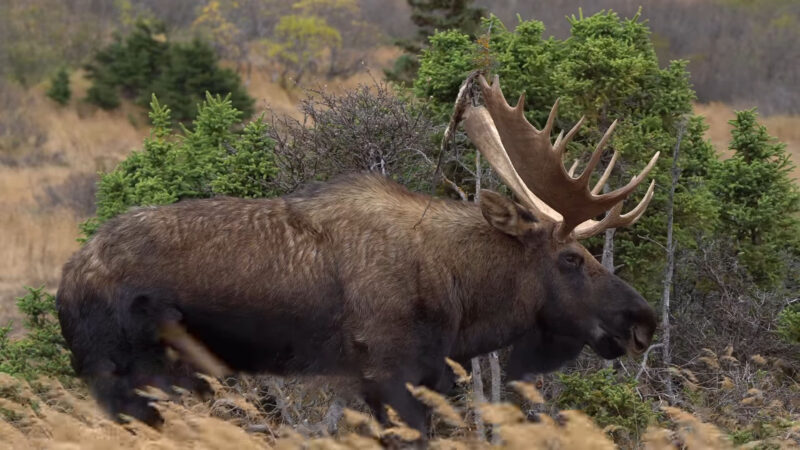Welcome, nature aficionados! Today, we embark on an intriguing exploration into the realm of the magnificent moose. This awe-inspiring creature, the largest member of the deer family, has long captivated the curiosity of scientists and wildlife enthusiasts across the globe.
Our journey today takes us to the heart of one of the most iconic features of the moose: its antlers. These towering structures are far from being mere aesthetic appendages. They are, in fact, vital tools and formidable weapons, playing a pivotal role in the moose’s survival and reproductive strategies.
In Native American lore, the moose, with its antlers symbolizing wisdom and spiritual authority, is a revered emblem of resilience. But what insights does science offer about these grand structures? Let’s delve into the growth and function of moose antlers in the animal kingdom.
The Majestic Antlers: More Than Just a Crown
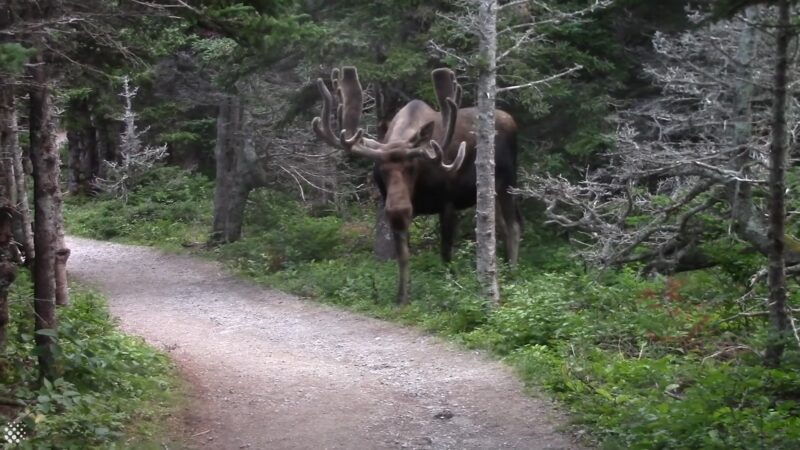
Moose, scientifically known as Alces alces, is easily recognized by their towering stature, long snouts, and, of course, their magnificent antlers. These antlers, however, are not merely ornamental. They serve a more profound biological significance that is deeply intertwined with the moose’s survival and reproductive success.
The Cycle of Antler Growth
Before we delve into the ‘why,’ let’s first understand the ‘how.’ Unlike horns, which are permanent, moose antlers are deciduous. This means they fall off and regrow annually, a cycle that begins when a male moose (known as a bull) is about one year old.
In the spring and summer, the antlers grow rapidly, covered in a soft skin called “velvet,” which supplies blood and nutrients to the developing bone beneath. By late summer, the antlers harden, the velvet is shed, and the moose is left with a set of fully-grown, bone-hard antlers. After the mating season in the fall, the antlers drop off, and the cycle begins anew.
The Role of Antlers in Mating
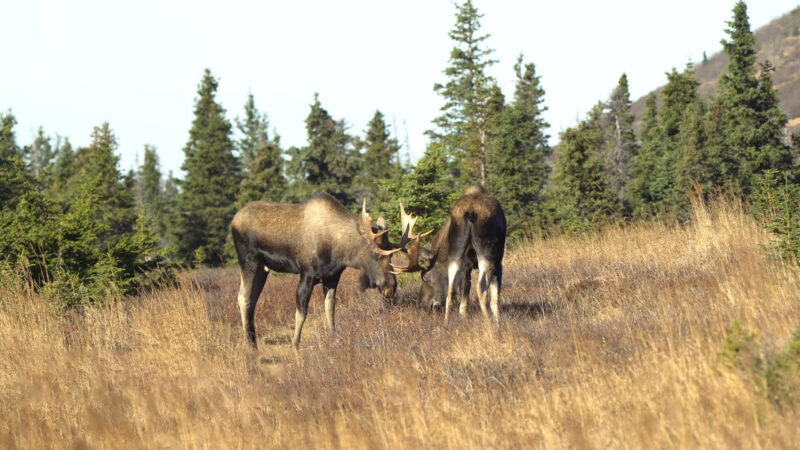
Now, onto the ‘why.’ The primary reason moose have antlers is for mating purposes. During the rut (mating season), bulls compete for the attention of females (cows). The size and condition of a bull’s antlers play a crucial role in these contests.
Larger, more robust antlers are a sign of a healthy, strong bull with good genes. They serve as a visual signal to cows, indicating a potential mate’s fitness. Bulls also use their antlers in physical contests with other males, locking their antlers together in a test of strength to determine who gets mating rights.
Antlers as Tools
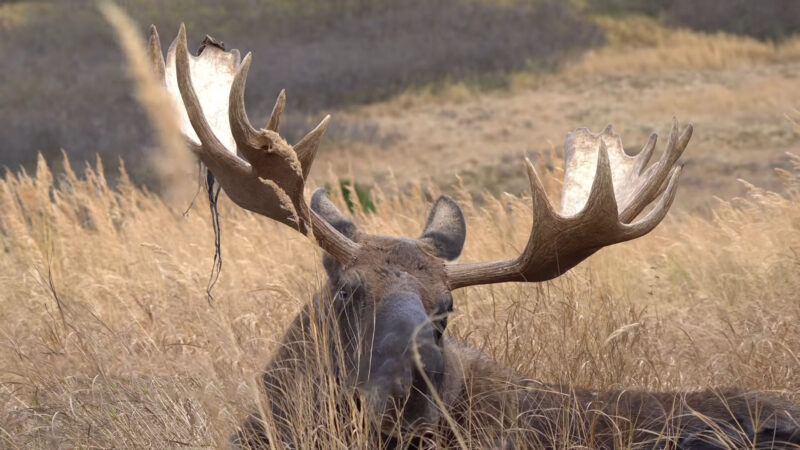
Antlers aren’t just for show or combat; they also serve practical purposes. Moose use their antlers as tools to clear away snow and uncover vegetation during the harsh winter months. They also come in handy for self-defense against predators like wolves or bears.
The Science Behind Antler Growth
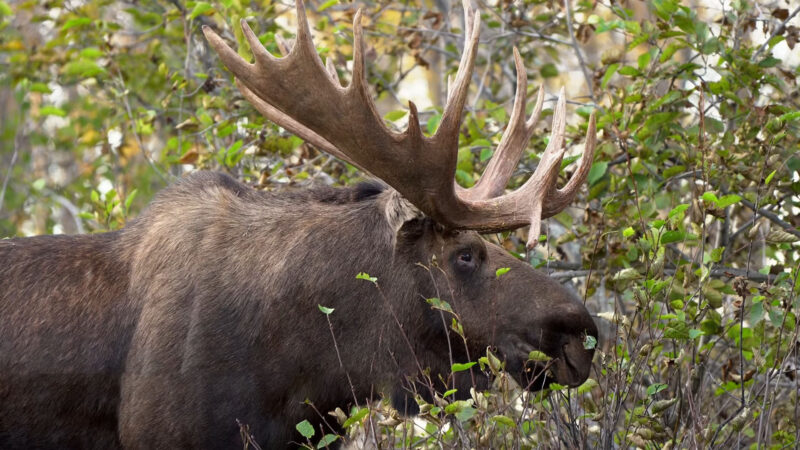
The growth of moose antlers is a remarkable biological process, driven by complex hormonal changes. Testosterone, the primary male sex hormone, plays a significant role in this process.
In the spring, as daylight hours increase, a bull’s testosterone levels rise, triggering the growth of antlers. Throughout the summer, these levels remain high, facilitating the rapid growth of the antlers. As daylight hours decrease in the fall, testosterone levels drop, leading to the weakening of the pedicle (the point of attachment for the antler), and eventually, the antlers fall off.
The Impact of Environment on Antler Size
Environmental factors significantly influence the size and health of a moose’s antlers. Nutrition, particularly a diet rich in calcium and phosphorus, is crucial for the growth of larger, healthier antlers. This is why bulls with the most impressive antlers are often found in areas with abundant, high-quality food sources.
Moose share their biome with several other species, including the grizzly bear. This shared habitat means they often compete for resources, and the presence of these large predators can add to the stress experienced by moose.
Stress from factors like high population density, predation, or harsh weather conditions can negatively impact antler growth. Chronic stress can elevate levels of the hormone cortisol, which can inhibit the effects of testosterone and consequently affect antler development.
For instance, in the harsh winters of the boreal forest or the mountainous regions of North America where both moose and grizzly bears are found, food scarcity and the threat of predation can lead to increased stress levels in moose, potentially impacting the growth of their antlers.
Antlers and Sensory Perception
Recent research suggests that moose antlers, with their large surface area and high blood flow, may contribute to sensory perception. These physical properties make antlers excellent radiators of heat, potentially enabling moose to detect temperature changes in their environment. As the environmental temperature fluctuates, so does the temperature of the blood flowing through the antlers, providing moose with valuable information about their surroundings.
This ability could be particularly beneficial during the harsh winters of the northern regions where moose live, helping them find warmer areas or avoid dangerously cold ones. It might also aid in detecting the warmth of nearby animals, useful for locating potential mates or avoiding predators. While this theory is still under investigation, it underscores the intricate and multifaceted roles of antlers in a moose’s life, reminding us that every feature in nature serves a purpose.
Antler Size and Age
One common misconception is that the size of a moose’s antlers is a direct indicator of its age. While it’s true that antlers grow larger as a moose matures, their size is more accurately a reflection of the moose’s overall health and vitality. A well-fed, healthy moose will typically have larger antlers than a malnourished or sickly one, regardless of age.
The Symbolism of Antlers
Moose antlers, across various cultures, are potent symbols of strength and endurance, embodying the raw power of nature and life’s resilience against harsh conditions. This symbolism is rooted in the antlers’ unique lifecycle.
The cycle of growth, shedding, and regrowth of antlers mirrors nature’s own rhythms. In spring and summer, antlers grow rapidly, hardening by late summer for the mating season. After the rut in fall, the antlers are shed, marking a period of rest. As seasons turn, new antlers grow, symbolizing renewal and life’s continuity.
The Future of Moose Antlers: A Changing Climate
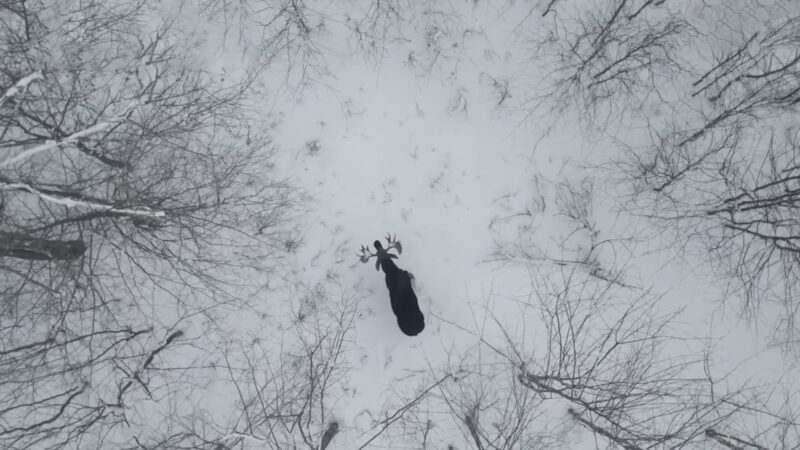
Climate change poses a significant threat to moose populations, and by extension, to their iconic antlers. Warmer temperatures can lead to increased parasite activity, which can negatively impact moose health and, consequently, antler growth.
Moreover, changes in vegetation due to climate change can affect the quality and availability of food sources, further impacting antler development. As we continue to grapple with the effects of climate change, understanding its impact on wildlife biology becomes increasingly important.
Conclusion
Moose antlers, those majestic crowns of the northern forests, are far more than just ornamental. They are tools, weapons, and signals, deeply intertwined with the moose’s survival and reproductive success. They are a testament to the intricate dance of hormones, genetics, and environment that shapes every aspect of an animal’s life.
As we continue to explore and understand the natural world, let’s remember to appreciate the complex beauty of phenomena like the growth of moose antlers. And let’s strive to protect these magnificent creatures and their habitats, for the sake of our planet and future generations.
Related Posts:
- Do Female Deer Have Antlers? - A Rare and Remarkable Feature
- Why Do Rats Have Tails? These are the Three Main Purposes
- Moose - Everything You Want To Know
- What Sounds Do Moose Make? - A Wildlife Expert Answers
- Do Sharks Have Tongues? (Revealing the Hidden Depths)
- Do Bears Have Tails? - Find Out the Truth Here


